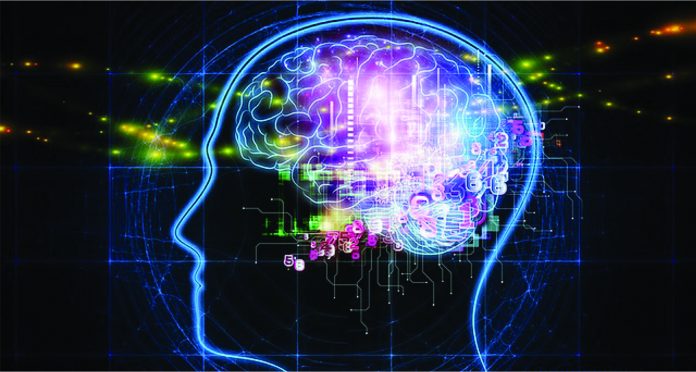Imagine a life where we communicate with our smartphones and computers simply by using our minds or turning on the lights at home just by thinking about it, or sending an e-mail from our smartphone without even pulling the device from our pocket. Farther into the future, a robot assistant will appear by our side with a glass of lemonade simply because it knows you are thirsty.
Our brain is more than what it seems to be. Imagining a phenomenon, where transmission of signals directly to someone’s brain, carries the potential to manipulate computers or machinery and experience specific sensory inputs, might sound more like sci-fi. This is now a reality that is not only convenient but it has been instrumental in aiding severely disabled people in leading a near-to-normal life, This is brain-computer interface (BCI) which could be the most important technological breakthrough in decades.
Early Beginning:
Researches in early 90’s showed that the brain flexibility is observed even in old age. The concept is called cortical plasticity, which means that the brain has extreme adaptability to varied and new circumstances and experiences. Learning something new or partaking in novel activities forms new connections between neurons and reduces the onset of age-related neurological problems. If an adult suffers a brain injury, other parts of the brain are able to take over the functions of the damaged portion.
This is an important factor in Brain Computer Interfacing as it means that as an adult can learn to operate with this technology, their brain forming new connections and adapting to this new use of neurons. In situations where implants are used, it means that the brain can accommodate this seemingly foreign intrusion and develop new connections that will treat the implant as a part of the natural brain.
How it works?
The technology is a combination of software and hardware forming the communication system between the brain and its external environment.
Our brains have neurons, which are individual nerve cells connected to one another by dendrites and axons. Our neurons are at work each time we think, move, feel or remember something. That work is carried out by small electric signals that zip from neuron to neuron as fast as 250 mph. The signals are generated by differences in electric potential carried by ions on the membrane of each neuron.
Although the paths the signals take are insulated by something called myelin, some of the electric signal escapes. With this technology, those signals can be detected, interpreted what they mean and can be used to direct a device of some kind. It can also work the other way around. Researchers could figure out what signals are sent to the brain by the optic nerve when someone sees the color red. A camera can be rigged that would send those exact signals into someone’s brain whenever the camera saw red, allowing a blind person to “see” without eyes.
One of the major challenges today in BCI research is the basic mechanics of the interface itself. The easiest and least invasive method is a set of electrodes, a device known as an electroencephalograph (EEG), attached to the scalp. The electrodes can read brain signals. However, the skull blocks a lot of the electrical signal, and it distorts what does get through.
Regardless of the location of the electrodes, the basic mechanism is the same. The electrodes measure minute differences in the voltage between neurons. The signal is then amplified and filtered. In current BCI systems, it is then interpreted by a computer program, although you might be familiar with older analogue encephalographs, which displayed the signals via pens that automatically wrote out the patterns on a continuous sheet of paper.
In the case of a sensory input BCI, the function happens in reverse. A computer converts a signal, such as one from a video camera, into the voltages necessary to trigger neurons. The signals are sent to an implant in the proper area of the brain, and if everything works correctly, the neurons fire and the subject receive a visual image corresponding to what the camera sees.
Another way to measure brain activity is with a Magnetic Resonance Image (MRI). An MRI machine is a massive, complicated device. It produces very high-resolution images of brain activity, but it can’t be used as part of a permanent or semi-permanent BCI. Researchers use it to get benchmarks for certain brain functions or to map where in the brain electrodes should be placed to measure a specific function. For example, if researchers are attempting to implant electrodes that will allow someone to control a robotic arm with their thoughts, they might first put the subject into an MRI and ask him or her to think about moving their actual arm. The MRI will show which area of the brain is active during arm movement, giving them a clearer target for electrode placement.
“The current brain technologies are like trying to listen to a conversation in a football stadium from a blimp,” said John Donoghue, a neuroscientist and director of the Brown Institute for Brain Science. “To really be able to understand what is going on with the brain today you need to surgically implant an array of sensors into the brain.”
To gain access to the brain, a chip is required to be inserted inside the head. With greater understanding of the brain, and, in turn, technologies that empower brain computer interfaces, this chip might not be used anymore.
Obama administration had taken an initiative called the Brain Activity Map project, a decade-long research project, aims to build a comprehensive map of the brain. It is claimed that the Brain Activity Map will give hardware companies a lot of new tools that will change how we use smartphones and tablets. It will revolutionize everything from robotic implants and neural prosthetics, to remote controls, which could be history in the foreseeable future when you can change your television channel by thinking about it.
Applications
The prime aim of the technology was to be providing assistive technologies for people with very severe motor disabilities, particularly locked-in syndrome (complete paralysis and inability to speak) caused by stroke or chronic disease. Recent breakthrough in computing and bio-sensing technologies have improved the outlook for BCI applications, making them not only promising for efficiency in assistive technologies but also in mainstream applications like smart home control, communication and control and entertainment and gaming.
In early 2013 NeuroSky, a San Jose, California based Company, had released a Bluetooth-enabled headset that can monitor slight changes in brain waves and allow people to play concentration-based games on computers and smartphones, all apps using the mind as the joystick. Another company, Emotiv, sells a headset resembling an enlarged alien hand could read brain waves associated with thoughts, feelings and expressions. The device was used to play Tetris-like games or search through Flickr photos by thinking about an emotion the person is feeling — like happy, or excited — rather than searching by keywords. Muse, a lightweight, wireless headband, can engage with an app that “exercises the brain” by forcing people to concentrate on aspects of a screen, almost like taking your mind to the gym.
Recently Mark Zuckerberg, CEO, Facebook, has expressed interest in brain-computer interface applications, and the company has recently issued job advertisements for neural imaging engineers to join their research team.
Market
Rising occurrence of target disorders and neurodegenerative conditions are expected to drive market growth over the coming period. In 2014, the global brain computer interface (BCI) market was valued at USD 723.64 million and is expected to grow at a CAGR of over 10.0% over the period.
R&D efforts have led to pioneering in the engineering of headset development, which provides treatment for impaired cognitive function.
However, recent technology innovation in the industry such as Puzzlebox’s “Orbit”, an organ controlled helicopter and iWinks’ “Aurora” a dreaming headband elucidating dreaming patterns and sign of individuals are anticipated to augment the global market growth. Ongoing projects by research institutes with government collaboration such as TOBI (Tools for Brain Computer Interaction) and Mind Walker are anticipated to incite the market growth. TOBI is a European integrated project including research institutes and companies working to develop assistive and practical technology for brain computer interface market.
Healthcare applications accounted for over 50% of the market share in 2014, with greater emphasis on R&D in patients with diseases such as Parkinsonism’s, epilepsy, paralysis and Alzheimer’s. The market is predictable to witness rising healthcare applicability due to escalating R&D and usage of the technology in assisting movement impaired people to carry out activities independently such operating wheelchairs, prosthetics, and various other instruments. Communication and control along with gaming segment are anticipated to witness the introduction of various new products during the forecast period.
Medical applications of this technology were the largest end-use segment in 2014. The U.S. Department of Defense (DOD) is increasing its funding towards military R&D, thereby promoting segment growth. Few pipeline projects such as the development of mobile robots that can function as weapon equipped drones in war zone areas, advancing communication systems by use of DARPA’s (The U.S. Defense Advanced Research Projects Agency) “Silent Talk” that would enable soldiers and military personnel to give commands via telepathic communication. BCI promises a wide array of applicability over time in disciplines such as home controlling, dream analysis and others.
The North American BCI market held the largest share globally, with rising occurrence of neurodegenerative diseases, rising popularity of virtual gaming and diversification of its applications driving regional growth. The European market is also expected to grow substantially over the forecast period majorly due to increasing R&D spending. Active research projects along with European Commission’s 7th framework program is dedicated to dealing with the results and analysis of non-invasive BCI such as TOBI, Decoder project, Mind Walker and BrainAble. Asia Pacific brain computer interface market is likely to witness significant gains during the forecast period with special emphasis on India, China, and Japan. Japan’s BCI Lab Group, a research institute won the BCI Research award in 2014 emphasizing its role as a pioneer and innovator of the region.
The players actively participate in conferences and exhibitions globally to increase the awareness level of people towards the market. Research and government agencies work in collaboration with these companies to facilitate the growth of the market and simultaneous R&D efforts. Clinical trials are routinely sponsored and conducted by various market players to validate product applicability.
Leading players and their innovations
- US based research company Neural Signals, Inc. is developing technology to restore speech to disabled people. An implant in an area of the brain associated with speech (Broca’s area) would transmit signals to a computer and then to a speaker. With training, the subject could learn to think each of the 39 phonemes in the English language and reconstruct speech through the computer and speaker .
- NASA has researched a similar system, although it reads electric signals from the nerves in the mouth and throat area, rather than directly from the brain. They succeeded in performing a Web search by mentally “typing” the term “NASA” into Google.
- Another US based company Cyberkinetics Neurotechnology Systems is marketing the BrainGate, a neural interface system that allows disabled people to control a wheelchair, robotic prosthesis or computer cursor.
Japanese researchers have developed a preliminary BCI that allows the user to control their avatar in the online world Second Life.











